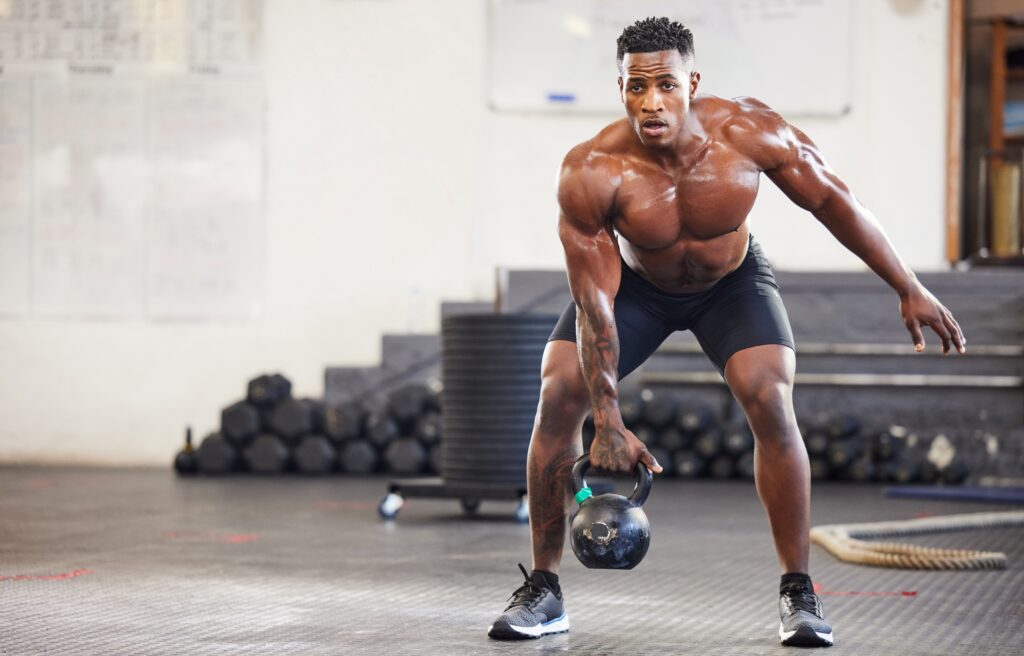Welcome to a new year of possibilities and potential. The best way to ensure success in any aspect of life this year is by maintaining a focus on consistent improvement in health and fitness. It’s easy to dig deeper into the rabbit hole with all of the science and misinformation on exercise readily available on the Internet, however, simplifying strength training is the key to making a turning point in health and fitness that will have a lasting effect.
Strength training is a journey, not a destination. To succeed, we must lay down a foundation, strip away the myths, and embrace the simplicity of building strength. Our focus: concentrating on power, resilience, and holistic fitness.
The main goal of strength training is to increase the ability of muscles to generate force against resistance. As a result, muscles are more powerful and have more endurance, and strength. Key components of strength training include:
- Resistance: This can be provided by using free weights like dumbbells, kettlebells, barbells, weight machines, resistance bands, or even body weight.
- Repetition: This refers to the number of times an exercise is performed consecutively and “sets” are groups of repetitions.
- Intensity: The level of difficulty or resistance in strength training is often referred to as intensity. This can be adjusted by changing the amount of weight lifted, the resistance applied, or the duration of an exercise or set.
- Progression: Over time, individuals gradually increase the intensity of their strength training to continually challenge the muscles and promote further adaptation and growth.
Strength training offers a wide range of benefits, including:
- Muscle Strength and Size: Regular strength training stimulates muscle fibers, which leads to an increase in muscle size (hypertrophy) and strength.
- Bone Health: Resistance training helps maintain or improve bone density and reduces the risk of osteoporosis.
- Metabolism: More muscle means more metabolism! Building muscle through strength training contributes to an increase in resting metabolic rate, and aids in weight management.
- Joint Health: Strengthening the muscles around joints provides support and can reduce the risk of injury.
- Functional Fitness: Improved strength translates to enhanced performance in daily activities and increased overall functional capacity.
- Mental Health: Strength training has been linked to improved mental well-being, including reduced symptoms of depression and anxiety.
Strength training is adaptable to different fitness levels, making it accessible to individuals of all ages and abilities. Incorporating a well-rounded strength training program into your fitness routine can contribute to a healthier, more resilient body.
Start with the basics — compound exercises that engage multiple muscle groups. Compound exercises engage more muscles and burn more calories in an efficient way than other exercises. The deadlift, squats, and pushups are timeless classics that form the backbone of any effective strength training routine. These exercises not only maximize your time exercising but also ensure a comprehensive full-body workout.

The following are fundamental movement patterns. Each of these movements targets different muscle groups and contributes to overall strength, stability, and functional fitness. Let’s break down each one:
- Squat: Bending at the hips and knees to lower the body, as if sitting down and then standing back up primarily targets the legs, hips, and core. This movement also strengthens the muscles around the spine and upper back by keeping a proper upright posture throughout the movement.
- Push: Pushing resistance away from the body engages the chest, shoulders, and triceps.
- Pull: Pulling a resistance toward the body targets the muscles of the back, including the latissimus dorsi and rhomboids, as well as the biceps.
- Lunge: Stepping forward or backward and lowering the body until both knees are bent at a 90-degree angle works the quadriceps, hamstrings, glutes, and calves.
- Hinge: Bending at the hips while keeping the back straight, such as in deadlifts or kettlebell swings primarily targets the posterior chain, including the hamstrings, glutes, and lower back.
- Carry: Carrying a weight for a distance, such as a “farmer’s walk” or “suitcase carry,” engages various muscles, particularly the core, shoulders, and hand grip.
- Plank: Holding a push-up position with the body in a straight line, engaging the core muscles to maintain stability and focusing on strengthening all muscles of the core. Think about including each of these elements in a workout routine either in each workout or within a week to ensure that each muscle group and movement pattern is strengthened.
Consistency is key. Begin with bodyweight exercises, master your form, and progressively increase resistance. Strength is a gradual process that demands dedication. Don’t forget to incorporate flexibility training and allow for sufficient recovery as a well-rounded approach ensures not only muscle growth but also longevity in your fitness journey.
Section 2: Monthly Triumphs – The Roadmap to Success
Let’s break down the year into manageable, achievable goals. Instead of overwhelming yearly resolutions, here is a monthly triumph strategy, providing a roadmap to success that keeps motivation and excitement about your fitness journey at a high level.
Dedicate each month in the first quarter of the year to mastering the consistency of a single exercise. Pick several repetitions to do each day of the week taking one rest day.
Either do the same amount of repetitions every day or add 5 repetitions every day to increase the intensity as you get stronger. Complete the daily goal every 24 hours and the repetitions can be broken up into sets as needed to fit time and ability constraints.
Many training clients and members of online training programs have had great success in getting exponentially stronger and dropping significant weight and body fat with this regimen. Be sure to take pictures on the first and last day of the month to see your progress.
January is about laying the groundwork for the strength you’re about to cultivate. The foundation for fitness starts with the body’s foundation, the legs. Start the year off with squats every day. Begin with 5, 25, 50, or 100 squats, and do 5 additional squats every day of the month, resting as needed. Be sure to stretch and do the squats with proper form.
Turn up the heat in February and build the upper body with pushups. Start with 25, 100, 150, or 300 pushups and hit that mark every day. Do as many as possible for each set. By the end of the month, shirts will fit differently and the physical change will be apparent in before and after pictures.
Make the most of March by rounding out the first quarter of the year doing glute bridges every day. Commit to doing 25, 50, or 100 repetitions of glute bridges each day and watch the effect on transforming your body. By April 1st, a different person will emerge not just physically but mentally as well having completed such a high level of commitment. At the same time, other accomplishments outside of health and fitness will be achieved and the power to make the most of every opportunity 2024 has to offer will have been achieved.
As 2024 unfolds, let a commitment to strength be your guiding force. The simplicity of the approach, the tenacity in the monthly challenges, and the sheer joy in conquering them will define a yearlong journey. This isn’t just a resolution; it’s a transformative expedition of forging ahead, one month at a time.
May 2024 be the year men excel not just in the gym but in life. Remember that every drop of sweat, every sore muscle, and every challenge overcome is a testament to your strength, both physical and mental. This journey is not just about building a better body; it’s about becoming a better version of yourself in 2024!


